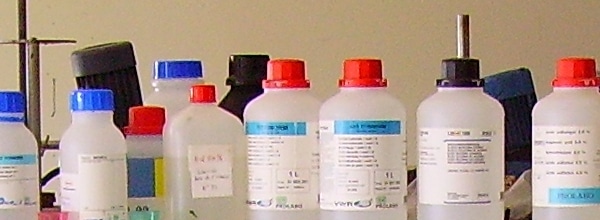Picture it: 6:00 pm on a Friday night. You have one or more experiments running. Maybe you’re doing a western blot, or following a staining protocol for an immunohistochemistry experiment, or just labeling tubes. But rather than working on active experiments, you’re helplessly searching through the lab drawer for that one pair of forceps, that one box of labels, or that favorite fine-tipped marker. We’ve all been there—searching through a drawer whose contents are as hodgepodge as the nuts in a fruitcake. Is lab organization even possible?
Here is a list of tried and true organization hacks for the lab drawer. My overall advice is to find the combination of tips that works for you. A wise technician once told me that the lab should be cleaner than your house. Also, don’t be discouraged if you fall off the organization bandwagon. It happens to everyone! Just pick yourself up and put that pair of scissors back where it belongs.
Office Items in Your Lab Drawer
The most mobile tenants of your lab drawer tend to be pencils, pens, permanent markers, wood sticks, or other long and thin objects that roll. One tried and true way to catch these items is the utensil holder. These square plastic containers have subdivided, rectangular compartments that were originally designed to hold forks, spoons, knives, and other gadgets of the utensil persuasion. Utensil holders can easily be re-purposed to hold those loose pens and pencils, as well as paper clips, pushpins, binder clips, scissors, and any other non-delicate lab gadget that fits in them.
Is your drawer too narrow to fit a silverware holder? You can also use small rectangular containers or boxes. If your drawer is deep enough, clean empty cups, mugs, jars, and even beakers (emphasis on clean), can serve as holding devices. You can also use rubber bands to corral those stray pens and pencils and small beakers to hold paper clips and binders.
Delicate Forceps and Fine Tools
Some inhabitants of the lab drawer, like fine tipped forceps or dissection scissors, are precious tools. You must take care to protect their integrity. A general rule of thumb is to keep them stored in their original case or packaging. Clean them before you store them, and keep them in a safe place when not in use.
Of course, in a lab setting, sometimes you inherit precious tools in a less than ideal manner. Maybe the case was lost, packaging discarded. What do you do then?
If the tips of your tools need protecting, I suggest finding a plastic, cone-shaped holder in which to place them. I often use cut off 0.5–10 µl or 10–200 µl micro-pipette tips. Then look for a long, rectangular box. I find empty razor blade boxes work well for storing forceps. In this way, you are not only protecting their functionality, but also ensuring their safety during storage.
Lab Tubes and Tape
Tubes come in all shapes and sizes—you’ve got your centrifuge, microcentrifuge, culture, and PCR tubes. You also have NMR tubes, basic test tubes, and, of course, your PCR strips. If they are purchased sterile, store them in their packaging, whether it be a box or a bag. I like to group mine together by use—PCR and microcentrifuge tubes are often used in the same experiment. So, I store them together in the same drawer. This sometimes means a box and a bag are stored in the same drawer. Some people choose, instead, to store boxes with boxes and bags with bags, regardless of function. Just choose what works best for you.
Lab tape is the scientist’s best friend. In the absence of a label maker, it becomes the tool for you to establish lab organization. Nothing is worse than lost lab tape. For simplest storage, I suggest investing in a multi-roll tape dispenser that can hold all your rolls and fits easily in your drawer.
Micropipettes
Most micropipette holders are designed for bench-top use. However, with a little investigative work, you can find holders designed for the drawer. You can also use utensil holders to sort and hold pipettes in the drawer. However, remember that micro-pipettes are delicately calibrated tools. While the utensil holder affords easy sorting, it provides no protection against the odd gadget you may throw in your drawer. Therefore, I prefer a box with a lid to store pipettes in a lab drawer.
Choose the Lab Organization Advice That Works for You
Remember that not all of these tips will work for you. The key is to pick the tips that will work for you and disregard the rest. Just choose what will help you avoid that desperate search for lab tape, that right pair of forceps, or the correct tubes at the last minute!
Do you have any lab drawer organization tips and tricks? If so, let us know in the comments!






